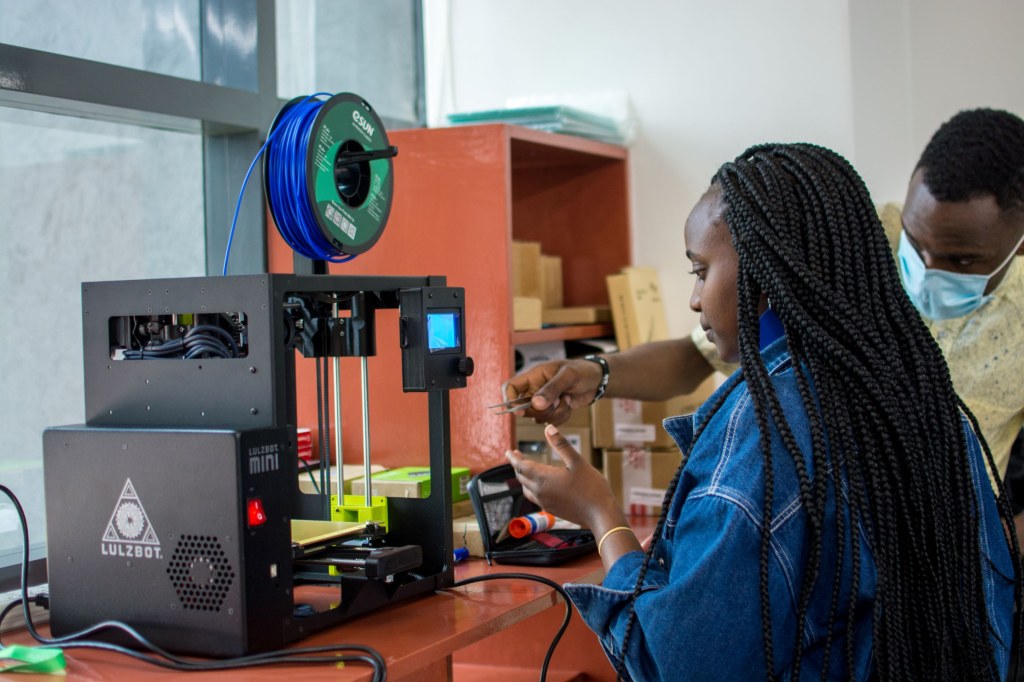Revolutionizing Kenya Through Innovation Technology: Unleashing The Power Of Opportunities!
Innovation Technology in Kenya
Table of Contents
Introduction
3 Picture Gallery: Revolutionizing Kenya Through Innovation Technology: Unleashing The Power Of Opportunities!



What is Innovation Technology in Kenya?

Image Source: hbr.org
Who are the Key Players?
When Did It Start?
Where is It Used?

Image Source: gfa-group.de
Why is It Important?
How Does It Work?

Image Source: undp.org
Advantages and Disadvantages
FAQ
Conclusion
Final Remarks
Introduction
Dear Readers,
Welcome to this article on innovation technology in Kenya. In recent years, Kenya has emerged as a hub for technological advancements and innovations, making significant contributions to the global tech industry. In this article, we will explore the various aspects of innovation technology in Kenya, including its definition, key players, timeline, applications, importance, and functioning. By the end of this article, you will have a comprehensive understanding of the innovation technology landscape in Kenya and its impact on the local and global economy.
What is Innovation Technology in Kenya?
Innovation technology in Kenya refers to the development and implementation of new and creative solutions to address societal challenges using technology. It encompasses a wide range of sectors, including but not limited to information technology, telecommunications, biotechnology, and energy. The focus is on creating innovative products, services, and processes that improve the quality of life, drive economic growth, and foster sustainable development.
Who are the Key Players?
Various organizations and individuals play a crucial role in driving innovation technology in Kenya. These include government agencies, research institutions, universities, startups, multinational corporations, and non-profit organizations. The government of Kenya has been actively promoting a conducive environment for innovation and entrepreneurship, supporting initiatives such as the establishment of innovation hubs and funding programs for startups.
When Did It Start?
The emergence of innovation technology in Kenya can be traced back to the early 2000s when the country witnessed a surge in mobile phone usage. The introduction of mobile money transfer services, such as M-Pesa, revolutionized the financial landscape and paved the way for further technological advancements. Since then, Kenya has witnessed a rapid growth of tech startups and innovative solutions in various sectors.
Where is It Used?
Innovation technology in Kenya is used across different sectors and industries. It has made significant contributions to sectors such as agriculture, healthcare, education, finance, and transportation. For example, in agriculture, technology-driven solutions have improved farming practices, increased crop yields, and facilitated access to markets. Similarly, in healthcare, innovative technologies have enhanced diagnosis, treatment, and healthcare delivery, particularly in remote areas.
Why is It Important?
The importance of innovation technology in Kenya cannot be overstated. It has the potential to drive economic growth, create employment opportunities, and improve the overall well-being of the population. Additionally, it enables the country to leapfrog traditional development pathways, addressing challenges more efficiently and sustainably. Innovation technology also enhances Kenya’s global competitiveness, attracting foreign investments and fostering international collaborations.
How Does It Work?
Innovation technology in Kenya works through a collaborative ecosystem involving various stakeholders. Startups and entrepreneurs develop innovative ideas and solutions, which are incubated and supported by innovation hubs, accelerators, and funding programs. Research institutions and universities play a crucial role in driving research and development activities, while multinational corporations provide resources and expertise. The government acts as a facilitator, creating policies and frameworks that foster innovation and entrepreneurship.
Advantages and Disadvantages
Innovation technology in Kenya offers several advantages, but it also comes with its fair share of disadvantages. Let’s explore both sides:
Advantages
1. Increased efficiency and productivity: Innovation technology enables automation and streamlines processes, leading to higher efficiency and productivity levels in various industries.
2. Job creation: The growth of the tech sector in Kenya has resulted in the creation of numerous employment opportunities, particularly for the youth.
3. Access to essential services: Innovation technology has improved access to essential services such as healthcare, education, and finance, especially in underserved areas.
4. Economic growth: The development of innovative solutions contributes to economic growth by attracting investments, increasing exports, and creating a favorable business environment.
5. Sustainable development: By addressing societal challenges through innovative and sustainable solutions, Kenya can achieve long-term development goals while minimizing environmental impact.
Disadvantages
1. Limited access and connectivity: Despite progress, there are still challenges in providing universal access to technology and bridging the digital divide, particularly in rural areas.
2. Skills gap: Meeting the demands of innovation technology requires a skilled workforce. There is a need for continuous learning and upskilling to ensure the availability of qualified professionals.
3. Data privacy and security: As technology advances, concerns about data privacy and security become more significant. Adequate measures must be in place to protect sensitive information.
4. Infrastructure limitations: The development of innovation technology relies on robust infrastructure, including reliable power supply, internet connectivity, and transportation networks. Improvements in infrastructure are necessary to support further growth.
5. Regulatory challenges: Rapid technological advancements often outpace regulatory frameworks, leading to uncertainties and legal complexities. Clear and adaptable regulations are essential to foster innovation while protecting the interests of all stakeholders.
FAQ
1. How is innovation technology transforming the agricultural sector in Kenya?
Innovation technology is transforming the agricultural sector in Kenya by introducing smart farming techniques, precision agriculture tools, and remote sensing technologies. These advancements help farmers improve crop yields, optimize resource utilization, and access markets more efficiently.
2. What are some successful startups in the innovation technology space in Kenya?
There are several successful startups in Kenya’s innovation technology space. Some notable examples include M-KOPA Solar, a provider of solar energy solutions to off-grid communities, and BRCK, a company that develops rugged internet connectivity devices for remote areas.
3. How is innovation technology contributing to financial inclusion in Kenya?
Innovation technology, particularly mobile money transfer services like M-Pesa, has significantly contributed to financial inclusion in Kenya. It allows individuals to access banking services, make digital payments, and even access credit facilities, even if they do not have a traditional bank account.
4. What role does the government play in fostering innovation technology in Kenya?
The government of Kenya plays a crucial role in fostering innovation technology by creating a supportive policy environment, establishing innovation hubs and incubation centers, and providing funding programs and tax incentives for startups and entrepreneurs.
5. How can individuals and organizations support the growth of innovation technology in Kenya?
Individuals and organizations can support the growth of innovation technology in Kenya by investing in startups, collaborating with research institutions and universities, mentoring aspiring entrepreneurs, and advocating for policies that promote innovation and entrepreneurship.
Conclusion
Innovation technology in Kenya has emerged as a powerful catalyst for economic growth, societal development, and global competitiveness. The country’s vibrant ecosystem of startups, research institutions, and government support has created a fertile ground for innovation and entrepreneurship. By leveraging technology and creative solutions, Kenya is addressing societal challenges, improving access to essential services, and driving sustainable development. As technology continues to evolve, it is crucial to nurture and support the innovation technology ecosystem to ensure continued progress and prosperity for all.
Final Remarks
Dear Readers,
Thank you for joining us on this journey to explore innovation technology in Kenya. We hope this article has provided valuable insights into the thriving tech landscape and its impact on various sectors. It is essential to recognize the power of innovation and its potential to shape a brighter future. Let us continue to support and embrace innovation technology, not only in Kenya but around the world, to build a more inclusive and sustainable society.
Best regards,
The Article Team
This post topic: Technology Innovation
